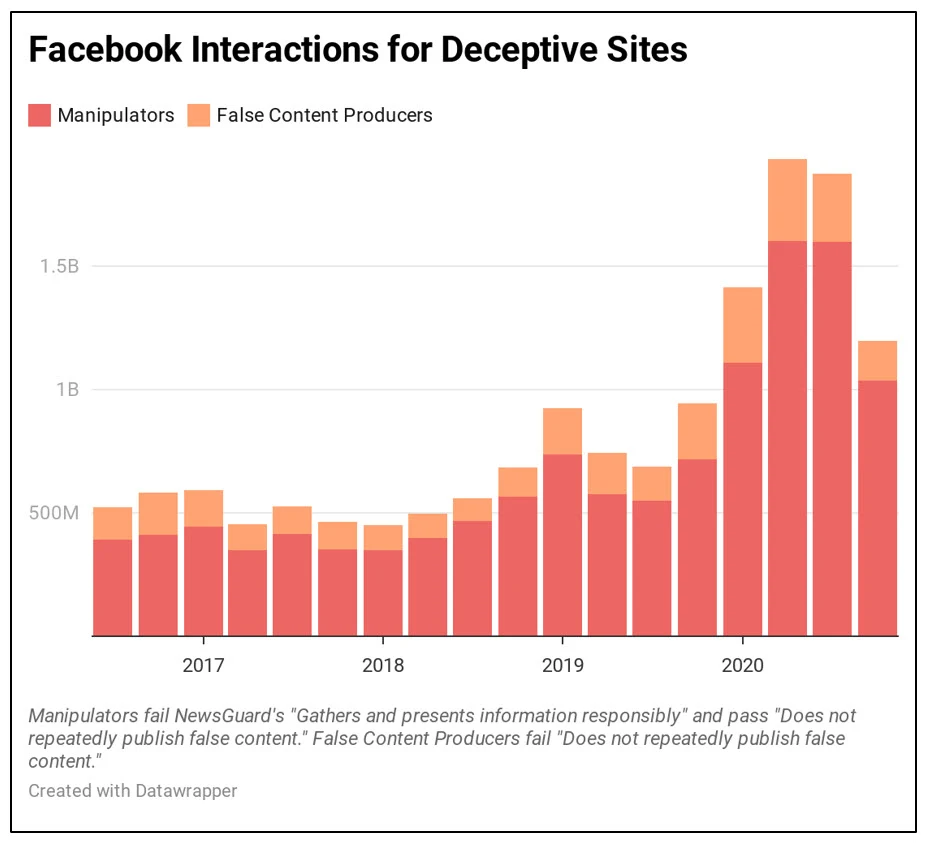The German Marshall Fund (GMF) of the USA recently published their findings related to ongoing research into deceptive online journalism. The report revealed that when it comes to sharing and forwarding misinformation, verified accounts on Twitter are touching the new heights, a development that’s sure to incite disappointment from the platform’s community.
The GMF, a nonpartisan US-based think tank owing its name to West German foundations, is rather used to conducting research regarding global issues. Granted, the discussion of misinformation on Twitter does seem like a step down from discussing, say, NATO’s stance on security in the Mediterranean. However, considering how much current day issues both stem from and revolve around online discourse, such researches go a long way in informing social media sites and apps about the shortcomings in their community that need to be worked on to create a truly safe space.
Misinformation and its propagation has been a hallmark of 2020, perhaps entirely owing to the COVID-19 pandemic. An entirely innumerable amount of online conspiracies have been launched and propelled forward, involving Bill Gates, 5G towers, and Lord knows what else. This has then been coupled with further raving against the usage of masks, and many unfounded tips and tricks to help people stay “safe” from the pandemic. A rather infamous example of the latter is individuals encouraging each other to inject themselves with liquid soap in an attempt to ward off viral attacks. A rather baffling conclusion to reach that was only topped by the utter willingness some people displayed in attempting this.
However, misinformation can easily be quelled and managed if figures of learned authority and earned influence use their voices on social media in order to actively oppose unfounded judgement. Here, rather disappointingly, Twitter displays signs of faltering. While the company itself has actively reiterated its stance against online misinformation, the Verified users on the platform seem to have different plans. GMF measured that Q4 of 2020 showed Verified accounts interacting with material from deceptive sites a whopping 47 million times, as opposed to the 28 million recorded in Q4 2019. An approximate increase of 19 million, coming straight from sources that we’re supposed to trust and hold faith in. These findings could also not have come at a worse time for Twitter.
Recently, the company has announced the relaunch of Verified accounts, after shelving new applications for a few years. Their main reasons for shutting down new badges owed to user complaints about how Verified accounts were less establishing respected figures across all fields and more people with celebrity and star power. This, along with other complaints about how Verified accounts led to a form of class-based segregation led to Twitter reconsidering its entire policy before relaunching. Now, more than ever, let’s hope that policy holds up.
Take a look at these charts for more insights on the level of users engagement with deceptive content on Twitter and Facebook.
 Read next: Apple Becomes The Most Valuable Brand In The World Again After 5 Years
Read next: Apple Becomes The Most Valuable Brand In The World Again After 5 Years
The GMF, a nonpartisan US-based think tank owing its name to West German foundations, is rather used to conducting research regarding global issues. Granted, the discussion of misinformation on Twitter does seem like a step down from discussing, say, NATO’s stance on security in the Mediterranean. However, considering how much current day issues both stem from and revolve around online discourse, such researches go a long way in informing social media sites and apps about the shortcomings in their community that need to be worked on to create a truly safe space.
Misinformation and its propagation has been a hallmark of 2020, perhaps entirely owing to the COVID-19 pandemic. An entirely innumerable amount of online conspiracies have been launched and propelled forward, involving Bill Gates, 5G towers, and Lord knows what else. This has then been coupled with further raving against the usage of masks, and many unfounded tips and tricks to help people stay “safe” from the pandemic. A rather infamous example of the latter is individuals encouraging each other to inject themselves with liquid soap in an attempt to ward off viral attacks. A rather baffling conclusion to reach that was only topped by the utter willingness some people displayed in attempting this.
However, misinformation can easily be quelled and managed if figures of learned authority and earned influence use their voices on social media in order to actively oppose unfounded judgement. Here, rather disappointingly, Twitter displays signs of faltering. While the company itself has actively reiterated its stance against online misinformation, the Verified users on the platform seem to have different plans. GMF measured that Q4 of 2020 showed Verified accounts interacting with material from deceptive sites a whopping 47 million times, as opposed to the 28 million recorded in Q4 2019. An approximate increase of 19 million, coming straight from sources that we’re supposed to trust and hold faith in. These findings could also not have come at a worse time for Twitter.
Recently, the company has announced the relaunch of Verified accounts, after shelving new applications for a few years. Their main reasons for shutting down new badges owed to user complaints about how Verified accounts were less establishing respected figures across all fields and more people with celebrity and star power. This, along with other complaints about how Verified accounts led to a form of class-based segregation led to Twitter reconsidering its entire policy before relaunching. Now, more than ever, let’s hope that policy holds up.
Take a look at these charts for more insights on the level of users engagement with deceptive content on Twitter and Facebook.
 Read next: Apple Becomes The Most Valuable Brand In The World Again After 5 Years
Read next: Apple Becomes The Most Valuable Brand In The World Again After 5 Years



